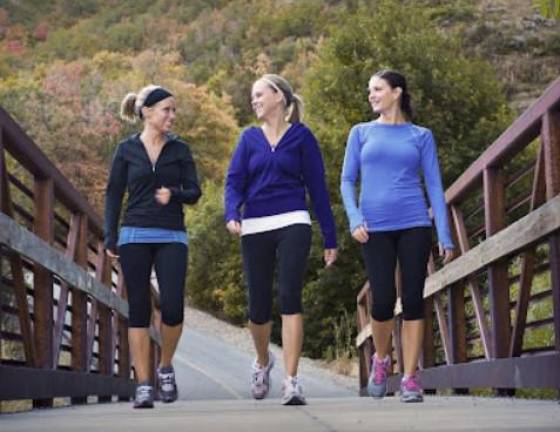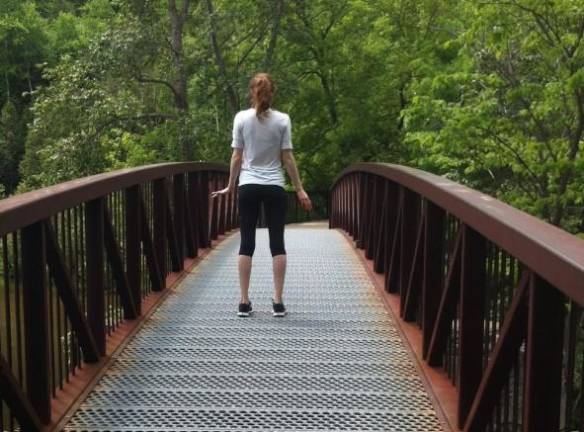Walking, a Low Impact Way to Shed Pounds, Is Nearly as Effective as Running


If you’re looking to lose weight, the Mayo Clinic has one word of advice: walk.
They’ve got the stats that make their point. The general rule is that walking briskly burns 100 calories per mile. True, kinesiologists, i.e. fitness folks, at California State University, San Bernardino, California, say its 10 fewer per mile, but the more interesting number comes from the Research Institute for Sport and Exercise Sciences, Liverpool’s John Moores University: Surprisingly, running only burned around 23 more calories per mile than walking.
Naturally there are rules for walking right. The first is to dress for success. You need shoes that support your arch with soles thick enough to cushion the shock of hitting the road. In brisk weather this time of year, you want loose but not floppy pants and a comfortable shirt, sweater, or jacket, in layers for chilly weather. In late spring and summer, shorts, a breathable tee and a hat with a brim to keep the hot sun from beating down are the rule. The color’s up to you with one exception; if you run at night wear something light and bright and maybe with a reflective stripe or two so you are visible to passing cars. Also dark colors tend to absorb heat so not a good choice in the dog days of summer.
Ready to go? Pick a path that’s safe with maybe a challenge or two along the way such as the slight hill in Manhattan’s mid-40s on Second Avenue or up the steps on some areas of the East River Greenway that are not blocked off by the East Side Resiliency project. Or maybe up and over the 1.1 mile Brooklyn Bridge now that the vendors have finally been banished. Or you can high tail it to the 1.58 mile Central Park reservoir loop and partake of some beautiful scenery along the way. (You’ll seen be able to see cherry blossoms on the trail, which are expected to bloom early this year.)
Women who did three shorter, fast-paced walks a week and two longer, moderate-paced ones lost five times more belly fat than those who simply strolled at a moderately five days a week, according to a study at the University of Virginia.
Naturally the Mayo mavens know exactly how you should look as you step along: “Your head is up. You’re looking forward, not at the ground. Your neck, shoulders and back are relaxed, not stiffly upright. You’re swinging your arms freely with a slight bend in your elbows. A little pumping with your arms is OK. Your stomach muscles are slightly tightened and your back is straight, not arched forward or backward. You’re walking smoothly, rolling your foot from heel to toe.”
The more important trick is to keep doing it. Department of Health and Human Services suggest you start with a relatively quick five minutes a day and increase that to a regular 30 minutes, upping to 60 on and off if you can, and interposing leisurely with brisk walking so long as you do more of the latter than the former.
Women who did three shorter, fast-paced walks a week and two longer, moderate-paced ones lost five times more belly fat than those who simply strolled at a moderately five days a week, according to a study at the University of Virginia. Also a good option is to walk when you break for lunch or walk to work instead of taking the bus or subway if close enough to your destination. Keeping a record as you increase the time and distance may help you turn walking into a habit.
Also, the repeated impact of regular walking strengthens your bones. Like other forms of exercise, walking energizes your muscles including the most important one, your heart. It improves balance, which may be a concern as you age. And Texans at the Lone Star’s Dallas Health Care system say it’s also great for your mood, memory and thinking because it makes your brain more sensitive to serotonin and norepinephrine, hormones that ameliorate depression and stimulate the release of endorphins, helping you feel happy. In other words, simply putting one foot briskly in front of the leads to less stress and tension and likely a better night’s sleep.
Best of all: think of all the money you’re saving by not hiking to a gym.